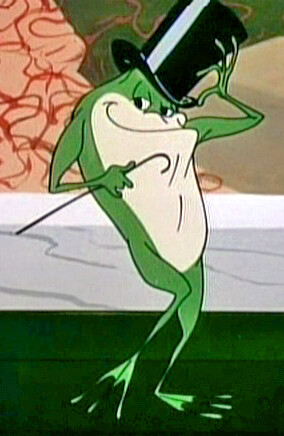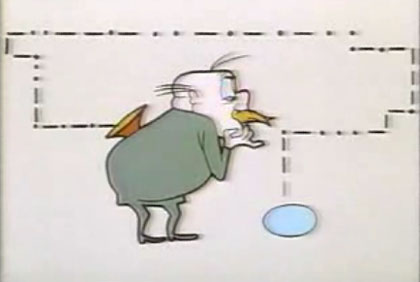
Title - To Beep or Not to Beep
Director - Chuck Jones
Released - 1963
Interesting Fact -- The only WEC/RR short to not feature their "Latin" names
Reason for Placement --
Ok, I've probably got some explaining to do.
This was one of the last WEC/RR shorts to be directed by Jones and his co-director Maurice Noble, and in my opinion, probably one of their best. Rather than opening in mid-chase, we start on Wile E. looking through a cookbook, only to be startled by the Road Runner. This is actually a great visual start to the chase, the viewer is given a real initiative as to why the coyote is going after this bird in the first place.
I'll go ahead and admit that To Beep or Not to Beep was easily my favorite cartoon when I was a kid. Not just one of the top 5 shorts, this was it. So what made this short so special to me? Plain and simple: the catapult sequence.
When it came to Wile E.'s traps and tricks, the coyote would try it once, it would backfire/blow up in his face, and he'd move onto the next idea. Not so in this short: he keeps trying and trying again with the same catapult, hoping that the next time he would be successful. After all, if at first you don't succeed, try and try again. But of course, for the poor coyote, it doesn't matter how many times he tries; the Fates have spelled it out nice and clear: NOT GONNA HAPPEN!
I'm sure I'll get some backlash on this one, but I guess I'm just about as stubborn as the coyote, because for me, To Beep or Not to Beep will remain one of the best Looney Tunes shorts of all time.





